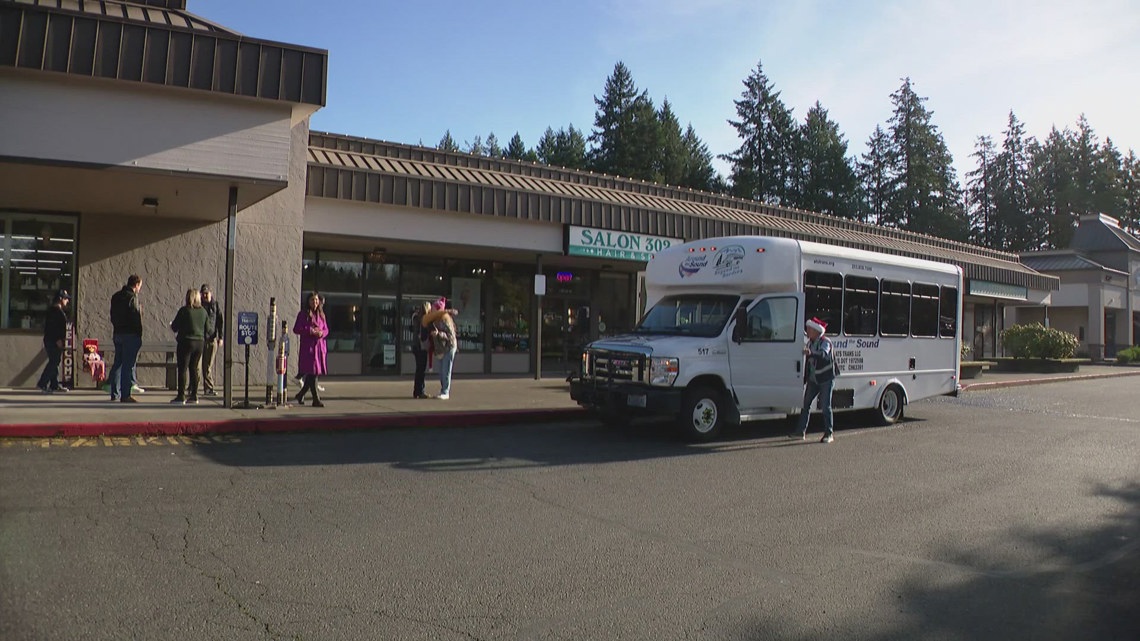North Central Pennsylvania Pressed Materials Consortium Releases New Plan for the Transformation, Growth of the Region’s Primary Manufacturing Sector – GantNews.com

Strategic Action Plan for the Pressed Materials Industry in North Central Pennsylvania
Introduction
The North Central Pennsylvania Pressed Materials Consortium, a multi-stakeholder partnership involving private industry, government, and non-profit entities, has launched a new Strategic Action Plan titled, “From Powder to Power: Positioning the Pressed Materials Industry as an Engine for U.S. Innovation and Growth.” This plan, developed over 18 months with support from the US Economic Development Administration (EDA), outlines a strategy to revitalize the region’s core manufacturing sector, known as the pressed materials industry. This initiative is designed to secure regional employment, foster innovation, and align with key United Nations Sustainable Development Goals (SDGs).
Regional Economic Context and Industry Significance
Industry Profile
The pressed materials industry, which includes powder metallurgy, metal additive manufacturing, and isostatic pressing, is a critical economic driver for North Central Pennsylvania. The region’s significance is demonstrated by the following metrics:
- Employment: The industry employs 9,000 workers, representing 43% of the total industry employment in the United States and 10% of all regional employment.
- Industry Concentration: The region is home to over 64 companies specializing in these processes, accounting for approximately 40% of all such firms in the nation.
- Global Footprint: North Central Pennsylvania hosts approximately one-third of the world’s powdered metallurgy and carbon manufacturing facilities.
Current Challenges
Despite its historical dominance, the industry faces significant challenges that threaten its long-term viability and its contribution to sustainable regional development. Key issues include:
- Economic Stagnation: Industry growth has slowed, with projections indicating a substantial loss of jobs in the coming decade without strategic intervention.
- Underinvestment in Innovation: The industry’s low-margin nature has limited investment in automation and next-generation technology, leading to a loss of competitive advantage against countries like China.
- Regional Decline: Broader economic decline in the region exacerbates the industry’s challenges, threatening both the local economy and U.S. leadership in this sector.
Alignment with Sustainable Development Goals (SDGs)
The Strategic Action Plan is fundamentally aligned with several UN Sustainable Development Goals, aiming to create a more prosperous, innovative, and resilient economic future for the region.
SDG 8: Decent Work and Economic Growth
The plan directly addresses SDG 8 by focusing on the retention of 9,000 jobs and creating a pathway for future growth. By revitalizing a core industry, the initiative aims to promote sustained, inclusive, and sustainable economic growth and ensure decent work for the community.
SDG 9: Industry, Innovation, and Infrastructure
Central to the plan is the goal of fostering innovation and building resilient industrial infrastructure. The creation of a collaborative R&D facility and a formal industry organization are key investments aimed at upgrading the industry’s technological capacity, promoting sustainable industrialization, and enhancing its global competitiveness.
SDG 11: Sustainable Cities and Communities
By securing the future of an industry that constitutes 10% of regional employment, the plan contributes to making the community more resilient and sustainable. A stable industrial base is essential for the long-term economic and social well-being of the region’s communities.
SDG 17: Partnerships for the Goals
The consortium itself exemplifies the multi-stakeholder partnership model of SDG 17. The collaboration between government, private industry, academia, and non-profit organizations is the foundational mechanism for implementing the plan and achieving its ambitious goals for sustainable development.
Core Strategic Initiatives
The plan outlines two core initiatives designed to create the organizational structure and innovative capacity necessary to drive future growth and achieve the stated sustainability objectives.
- Formation of a Regional Industry Organization: This body will be established to foster collaboration, align strategic priorities, and provide unified governance for the industry’s collective efforts.
- Creation of a Collaborative R&D Facility: A new, shared research and development facility will be created and managed to serve as a hub for innovation, allowing companies to explore emerging markets, applications, and next-generation manufacturing processes.
Future Outlook
Through the coordinated implementation of these initiatives, the Strategic Action Plan aims to reverse the industry’s decline and reposition it for growth. The path forward requires sustained investment and collaboration from all stakeholders. By focusing on innovation and collective action, the North Central Pennsylvania pressed materials industry can transition into new markets, enhance its contribution to the U.S. economy, and serve as a model for sustainable industrial development.
Analysis of Sustainable Development Goals
1. Which SDGs are addressed or connected to the issues highlighted in the article?
-
SDG 8: Decent Work and Economic Growth
The article directly addresses economic growth and employment. It highlights that the pressed materials industry employs 9,000 workers, representing 10% of all regional employment. A core concern is the projected loss of jobs and the industry’s recent slowdown in growth. The strategic plan’s primary goal is the “retention of these employment opportunities” and reversing the industry’s decline to drive the regional economy.
-
SDG 9: Industry, Innovation and Infrastructure
The strategic plan is centered on fostering innovation and strengthening industrial capabilities. The article points out that a low-margin environment has “limited investments in innovation, automation, and next-generation opportunity development.” The plan’s core initiatives, including the “creation and management of a new collaborative R&D facility,” are designed to upgrade the industry’s technological capacity, enhance research, and build a resilient infrastructure for future growth.
-
SDG 17: Partnerships for the Goals
The entire initiative described in the article is built on a multi-stakeholder partnership. The “North Central Pennsylvania Pressed Materials Consortium” is explicitly defined as “a group of private industry, government, economic development, workforce development, and other nonprofit partners.” The plan emphasizes the need for “coordinated implementation and investment from government, academia, private industry, and more” to achieve its goals, perfectly embodying the spirit of this SDG.
2. What specific targets under those SDGs can be identified based on the article’s content?
-
Target 8.2: Achieve higher levels of economic productivity through diversification, technological upgrading and innovation.
The article states that the industry’s decline must be “rooted in innovation, alignment, and collaboration.” The plan aims to reverse the lack of investment in “innovation, automation, and next-generation opportunity development” and expand into “emerging markets, applications, and use cases,” which directly aligns with achieving higher productivity through technological upgrades.
-
Target 8.5: By 2030, achieve full and productive employment and decent work for all women and men…
A central focus of the strategic plan is employment. The article highlights the industry’s 9,000 workers and the projection that it could “lose a substantial share of jobs.” The plan’s focus on the “retention of these employment opportunities” is a direct effort to maintain and secure productive employment for the region’s workforce.
-
Target 9.5: Enhance scientific research, upgrade the technological capabilities of industrial sectors… encouraging innovation.
This target is addressed by one of the plan’s two core initiatives: the “creation and management of a new collaborative R&D facility for the industry.” This facility is intended to serve as a bedrock for innovation, reversing the trend of underinvestment and helping the industry make a “leap into a future of transformation and growth.”
-
Target 17.17: Encourage and promote effective public, public-private and civil society partnerships.
The article is a clear example of this target in action. The consortium itself is a public-private partnership involving industry, government, and non-profits. The plan’s success is explicitly tied to “coordinated implementation and investment from government, academia, private industry, and more,” showcasing the promotion of an effective multi-stakeholder partnership.
3. Are there any indicators mentioned or implied in the article that can be used to measure progress towards the identified targets?
- Number of jobs in the pressed materials industry: The article provides a baseline of “9,000 workers.” An indicator of success for the plan would be the retention or growth of this number over the coming decade, directly measuring progress towards Target 8.5.
- Investment in research and development (R&D): The plan calls for the “creation and management of a new collaborative R&D facility.” The establishment of this facility and the amount of capital invested in it by partners would be a key indicator for measuring progress towards Target 9.5.
- Formation and functioning of multi-stakeholder partnerships: The plan’s first core initiative is the “formation of a regional industry organization.” The successful establishment and active participation within this organization and the broader consortium serve as a direct indicator for Target 17.17.
- Industry’s share of regional employment: The article states the industry accounts for “10% of all regional employment.” Monitoring this percentage would be an indicator of the industry’s health and its importance to the regional economy, relevant to Target 8.2.
Summary Table
4. Create a table with three columns titled ‘SDGs, Targets and Indicators” to present the findings from analyzing the article.
| SDGs | Targets | Indicators |
|---|---|---|
| SDG 8: Decent Work and Economic Growth |
8.2: Achieve higher levels of economic productivity through diversification, technological upgrading and innovation.
8.5: Achieve full and productive employment and decent work. |
– Industry’s share of regional employment (Baseline: 10%). – Number of jobs retained or created in the pressed materials industry (Baseline: 9,000). |
| SDG 9: Industry, Innovation and Infrastructure | 9.5: Enhance scientific research, upgrade the technological capabilities of industrial sectors, and encourage innovation. |
– Establishment and funding of the new collaborative R&D facility. – Level of investment in innovation and automation by companies in the region. |
| SDG 17: Partnerships for the Goals | 17.17: Encourage and promote effective public, public-private and civil society partnerships. |
– Successful formation and operation of the regional industry organization. – Amount of coordinated investment from government, academia, and private industry. |
Source: gantnews.com
What is Your Reaction?
 Like
0
Like
0
 Dislike
0
Dislike
0
 Love
0
Love
0
 Funny
0
Funny
0
 Angry
0
Angry
0
 Sad
0
Sad
0
 Wow
0
Wow
0
















































:focal(1500,1000)/https://media.globalcitizen.org/a6/9a/a69a4720-d8a1-4715-b596-18738d03c05c/rotary_polio_hero_image.jpg?#)







/countries/sri-lanka/photo-credit---dmc-sri-lanka.tmb-1200v.jpg?sfvrsn=dc298bcc_1#)

















